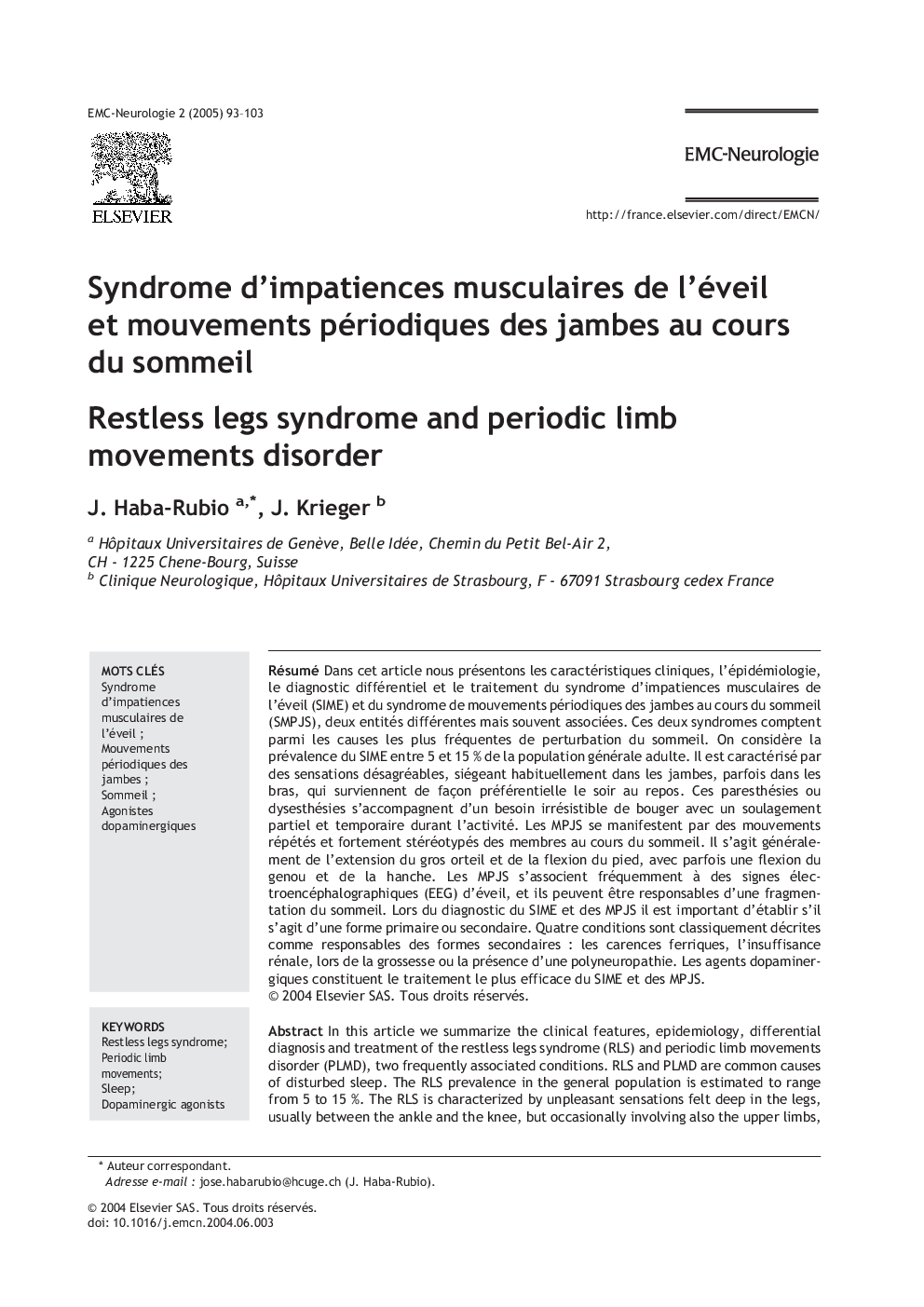| Article ID | Journal | Published Year | Pages | File Type |
|---|---|---|---|---|
| 9190153 | EMC - Neurologie | 2005 | 11 Pages |
Abstract
In this article we summarize the clinical features, epidemiology, differential diagnosis and treatment of the restless legs syndrome (RLS) and periodic limb movements disorder (PLMD), two frequently associated conditions. RLS and PLMD are common causes of disturbed sleep. The RLS prevalence in the general population is estimated to range from 5Â to 15Â %. The RLS is characterized by unpleasant sensations felt deep in the legs, usually between the ankle and the knee, but occasionally involving also the upper limbs, and occurring at rest, especially at bedtime. The paresthesias or dysesthesias are accompanied by motor restlessness and by an urge to move the limb, which results in a temporary relief of the symptoms. PLMD are characterized by stereotyped, periodic jerking movements of a non-epileptic origin consisting in an extension of the big toe and dorsiflexion of the ankle with an occasional flexion of the knee and hip. PLMS can be accompanied by short awakenings or transient arousals resulting in sleep disruption. In establishing the diagnosis of RLS/PLMS idiopathic and secondary forms should be distinguished, and in particular, a number of other conditions (iron-deficiency, uremia, pregnancy or polyneuropathy) need to be considered. The dopaminergic agents are the best studied and the most successful agents for treatment of RLS and PLMD.
Keywords
Related Topics
Life Sciences
Neuroscience
Neurology
Authors
J. Haba-Rubio, J. Krieger,
